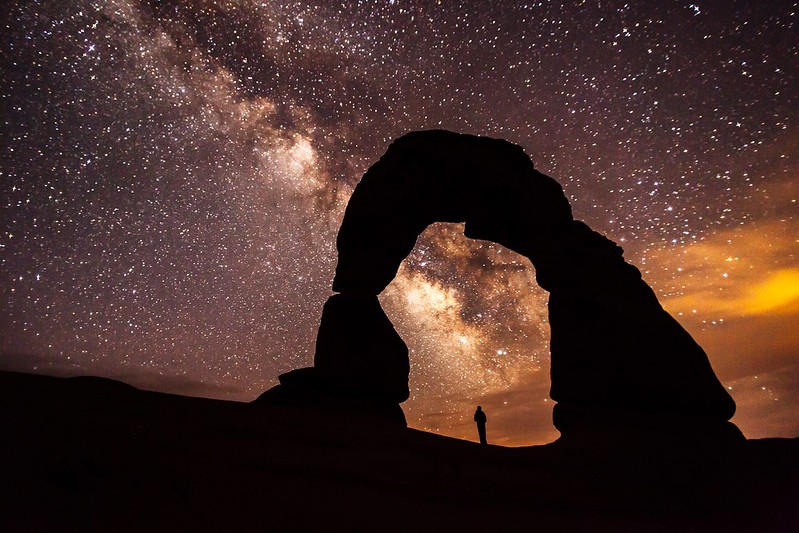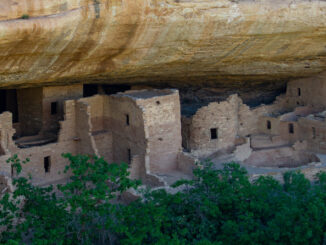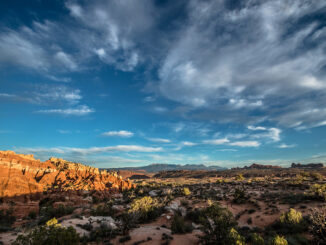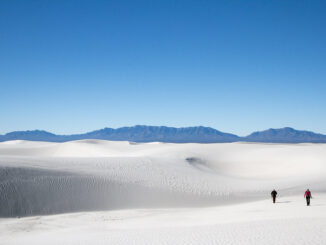
Parks, preserves, and the wildlife that inhabit them are up for sale to the highest bidder as the Trump admin ramps up its attacks on America’s natural heritage. It’s time for public parks lovers everywhere to fight back.
A relatively young country, the United States lacks the historic architectural wonders of the sort that draw millions of visitors to Europe every year.
1,000-year-old castles loom large over the isle of Great Britain and mainland Europe. Churches built centuries ago still host religious services today. The Sistine Chapel, built in the 1400s, stands as strong as ever, a glorious moment in the center of Rome not far from the ruins of the Coliseum, which was completed in the year 80.
America has none of this, but it does have natural wonders like the Painted Desert, Monument Valley, giant redwood forests, and Arches National Park.
Where Italy has the Sistine Chapel, Americans can point to Devil’s Tower in Wyoming. Where Greece has the Parthenon (construction completed in 438 BCE), Arizona boasts the Grand Canyon (at least 70 million years old).
The US national parks and other federally protected lands have been called “America’s cathedrals” and rightly so. Work to preserve these treasures for generations to come began when President Ulysses S. Grant established the world’s first national park at Yellowstone in 1872. That move would be later described as “America’s best idea.”
These cathedrals are now under assault by the very government charged with protecting them.
The new government in Washington is scheming to gut parks funding, eliminate positions, end any and all scientific research tracking global warming’s impacts on parks, and sell off huge parts of some parks to private mining and oil interests.
The National Parks Conservation Association warns that a new federal budget proposes slashing the US National Park Service’s funding by up to $1 billion. “If enacted, it would be the largest cut in the Park Service’s 109-year history,” NPCA stated.
Conservationists and nature lovers are only beginning to mount a response to all this. It may be too late, but groups are scrambling to coordinate and plot their next moves before the situation gets even worse.
Caught off-guard and winded for months, nonprofits are beginning to find their footing to fight back in some way.
Signs of a burgeoning civil society pushback are emerging, with nonprofits adding new strategic staff while building up their financial war chests. Groups are mobilizing to meet these threats to public lands and wildlife in the courts and the court of public opinion.
There’s never been a worse time to be a nature enthusiast in the United States. That said, the response to Trump’s attacks on America’s natural heritage may finally be building up steam.
Still reeling from the blows
Thousands of biologists, geologists, conservation crew members, and park stewards have lost their jobs, leaving America’s cathedrals dangerously understaffed. The cuts are the result of the Trump administration’s efforts to pay for some $5 billion in tax cuts that will mainly benefit America’s wealthiest citizens.
Now, the administration is looking to gut parks funding even further.
Aside from the $1 billion in proposed cuts to NPS’s budget, the National Parks Conservation Association warns of additional proposed cuts of up to $267 million will force the closure of projects from Hawaii to Ohio. The elimination of these funds could threaten the future of an effort to save bird species on Maui from extinction, an initiative covered here earlier.
Trump administration officials are preparing to drastically reduce the size of at least six western national monuments.
Their first step is to assess the monuments’ potential for oil and natural gas reserves. Trump is determined to see the US turn its back on new and emerging advanced energy technologies, insisting that America’s energy future lies in oil and gas (finite resources first commercialized in the late 1800s).
There are also moves to water down the now 51-year-old US Endangered Species Act.
A centerpiece of that act is preserving species at risk by preserving the habitat they depend on for their existence. Trump and his team want to make it OK to destroy the habitat of endangered species, which would destroy the endangered species in the process.
Almost every new policy proposal involving public lands and wild places seeks ways to cut conservation funding, shrink the size of protected areas, sell off tracts of land to private interests, and allow for more harmful development and actions that would reverse the slow, sputtering progress of the Endangered Species Act.
Not even the oceans are safe.
America’s largest marine protected area was first established by a Republican president. No matter—Trump wants to virtually eliminate the protected status these vast open ocean areas enjoy and invite commercial fishing interests to strip-mine them as they did in US coastal waters long ago.
Emboldened by the new administration’s aggressive moves against nature, at least one company has already informed an obscure United Nations agency that it is poised to proceed with mining the ocean bottom in a region between Hawaii and Mexico. It’s not even clear if there’s any serious market for minerals that are extracted this way—deep-sea mining has been put off for decades because it hasn’t been commercially viable.
These are all massive steps backward. The world needs to be expanding the parts of Earth set aside to stop the mass extinction event now unfolding. The US government is now moving in the opposite direction.
We are in the midst of America’s Age of Regression in conservation, upending more than a century of progress. And the bad news keeps pouring in.
The Wildlife Society recently notified its members that a popular conservation initiative led by the United States Geological Survey will likely come to an end. Grants under USGS’ Ecosystems Mission Area are being frozen or cancelled. Expect job losses to follow, that group said.
At a time when an expanding US population needs greater access to lands and the recreational opportunities they bring, many in Congress are pushing to restrict public access and privatize lands instead.
The Trust for Public Land is blasting recent moves by a committee in Congress that would require the federal government to sell much of its land holdings in western states. TPL pointed to public polling data showing just how unpopular the Trump administration’s public lands policies are—at least 74% of the American public oppose closing public lands, and 71% oppose selling any bit of them.
“Public lands must serve communities, both now and for future generations,” said Trust for Public Land CEO Carrie Besnette Hauser in a statement delivered shortly after a vote was taken in the House Natural Resources Committee. “Selling off these lands to private interests breaks the promise made to all Americans that these shared spaces will remain protected, accessible, and available to everyone.”
Punching back
Tomorrow, NPCA is hosting an online event in a bid to begin mobilizing a response.
NPCA put out an open invitation for like-minded nonprofits, conservationists, laid-off park staff, scholars, community members, and everyone with a stake in this fight to join a May 22 online call to discuss the current situation and what can be done about it.
“Join us for a virtual Park Talk to learn about the latest threats against national parks and how you can take action to help us fight these threats and preserve our shared history and heritage,” NPCA said.
Interested participants can register here.
The call comes just ahead of the busy Memorial Day holiday weekend in the United States, when millions of Americans will hit the road to vacation, a huge proportion of those heading to the national parks.
Due to mass layoffs and budget cuts, national parks guests will almost certainly notice staff shortages affecting the cleanliness and quality of facilities. Entry may take longer, as well, with fewer staff to accept fees and issue entry tags.
NPCA fears that the US may be forced to shutter hundreds of national parks, monuments, and preserves should the Trump administration’s budget-gutting plans move forward.
The fight to protect America’s cathedrals isn’t over and it’s far from lost completely. At stake is the nation’s natural heritage, which belongs to all of us and all Americans who will come after us.
“We could lose more than 350 national parks unless we come together right now and put an end to the reckless attacks on park staff, funding, and the parks themselves,” NPCA warned.
Park Info
Park:
USA National Parks
Location:
United States
More information:
https://www.nps.gov/planyourvisit/national-park-system-operating-status.htm



